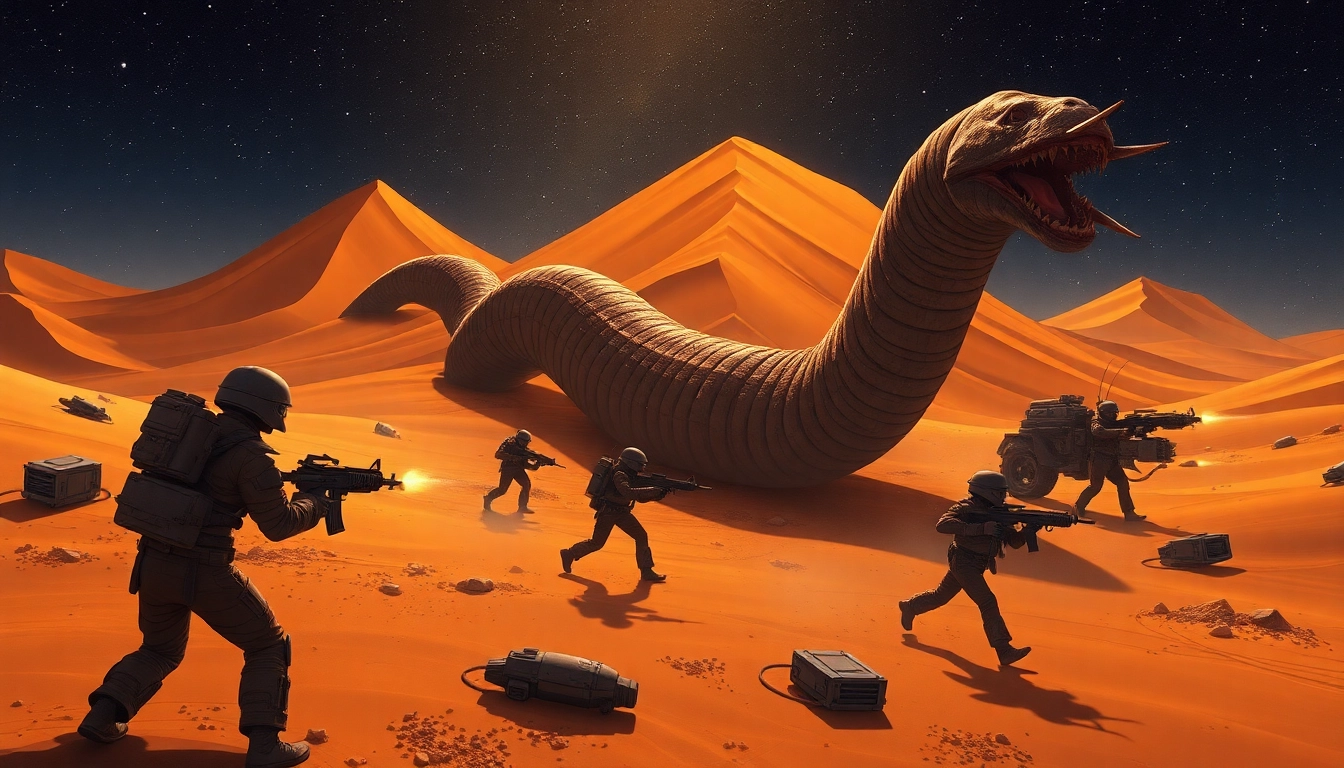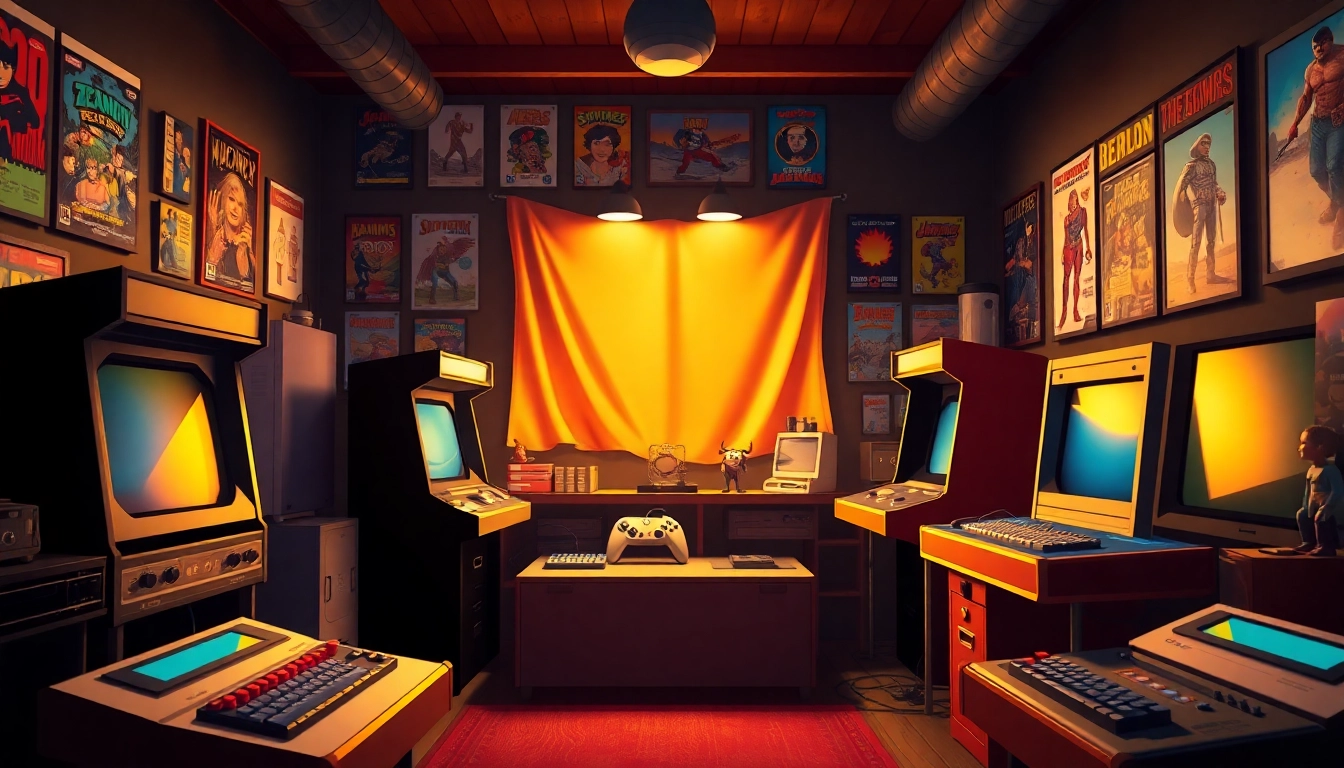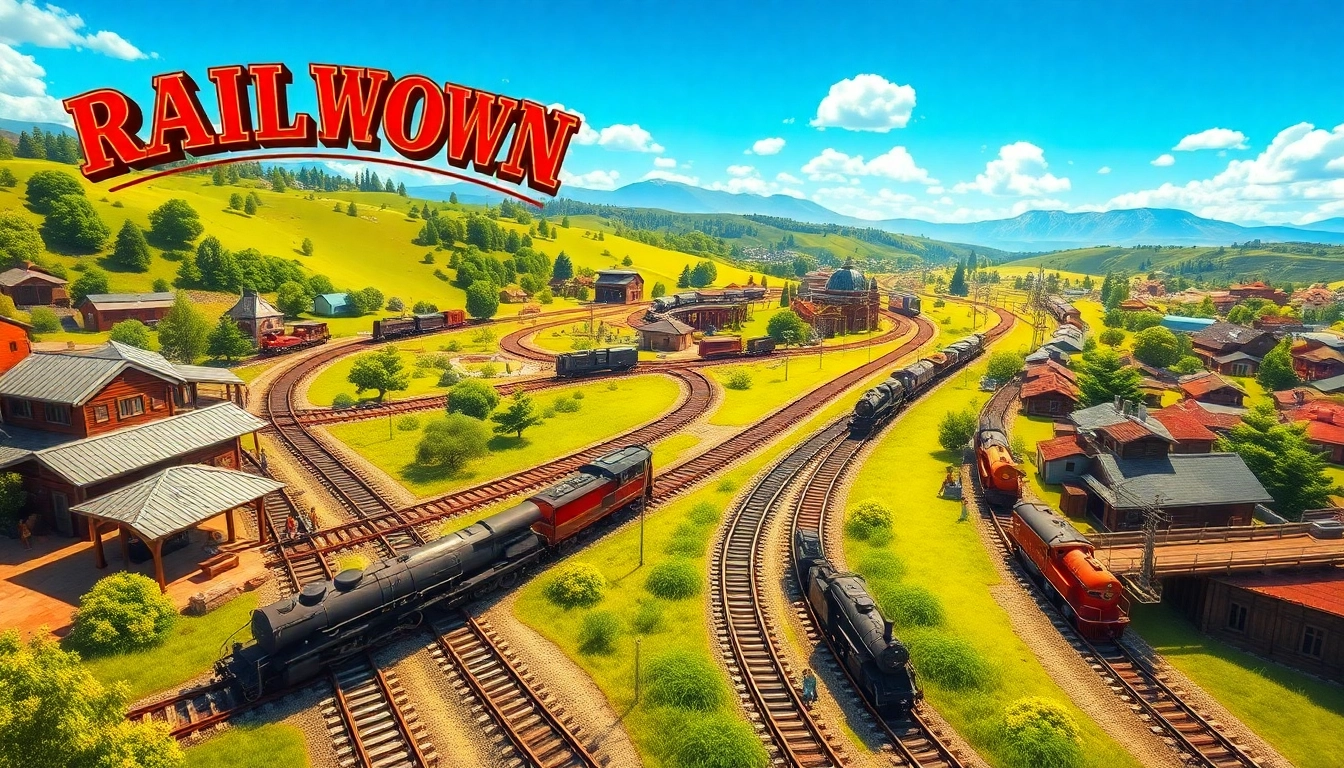Introduction to the Dune 2 Game
Overview of Dune 2 Game
Dune II: The Building of a Dynasty is a pivotal real-time strategy game that was developed by Westwood Studios and released in 1992. Renowned for its strategic depth and resource management gameplay, the dune 2 game marked the beginning of the real-time strategy (RTS) genre as we know it today. Set in the rich universe of Frank Herbert’s Dune, the game transports players to a harsh and resource-desperate desert planet called Arrakis, where they vie for control over the most valuable substance in the universe: spice. This game is often credited with establishing many conventions of the RTS genre and has influenced numerous titles that followed.
Historical Context of Dune 2 Game
Releasing in a period when video games were transitioning from traditional turn-based strategies to more dynamic and engaging real-time formats, Dune II played a significant role in shaping the gaming landscape. Its predecessor, the original Dune, introduced players to the rich lore and universe of Dune but lacked the real-time mechanics that would engage players more deeply. By refining and expanding on these concepts, Westwood Studios created a gameplay experience that offered both excitement and depth. The development cycle of Dune II involved understanding player preferences at that time, which ultimately led to an innovative user interface, fog of war mechanics, and tactical unit deployment.
Impact on Strategy Gaming
One of the landmark achievements of Dune II was its profound influence on subsequent strategy games. Notable features included an intuitive interface that allowed players to efficiently manage resources, construct buildings, and command units seamlessly. The tiered structure of unit advancement introduced a level of strategy that would later become foundational in many RTS games. Innovations like queueing commands and controlled unit formations can still be seen in modern strategy games, showcasing Dune II’s lasting legacy within the genre.
Gameplay Mechanics of Dune 2 Game
Resource Management Strategies
Resource management is vital in Dune II as players must gather spice to finance their armies and expand their territories. Players can harvest spice using the harvester unit, which requires careful protection from the sandworms, native predators that threaten spice production. Successful players need to develop strategies that optimize spice collection while also balancing investments in unit production and base expansion. Understanding the timing of your resource gathering in relation to opponent actions can dramatically impact the outcome of a match.
Combat Techniques and Units
The combat system in Dune II introduces players to various units characterized by unique attributes. From infantry to heavy vehicles, players must learn each unit’s strengths and weaknesses to devise effective combat strategies. For example, the Atreides units are agile but less powerful, making them effective for scouting and harassment, whereas Harkonnen units are more robust but slower. Successful strategies often involve utilizing a mix of unit types and the element of surprise, such as ambushing enemy harvesters or overwhelming smaller enemy forces.
Building and Base Construction
Base construction is another crucial element that players must master. Players are given a designated area where they can build structures that produce units and offer various defensive capabilities. Understanding when to expand your base and build defensive structures can turn the tide in your favor. Strategic placement of turrets can protect against enemy attacks and force opponents to rethink their assault strategies. Advanced players often create a fortified perimeter, allowing them to focus on resource collection without constant concern for threats.
Factions in the Dune 2 Game
House Atreides: Strengths and Weaknesses
House Atreides embodies a balance between speed and tactical versatility. They have powerful infantry units and reliable vehicles, making them suitable for players who favor a hybrid approach between offensive and defensive strategies. Nevertheless, their units are generally weaker than those of House Harkonnen, and players must use guerilla tactics to mitigate this disadvantage. Effective scouting and quick hit-and-run tactics can help Atreides players capitalize on their strengths while compensating for their vulnerabilities.
House Harkonnen: Strategy and Tactics
House Harkonnen is typically characterized by overwhelming force and sheer firepower, making them ideal for players who prefer aggressive tactics. Their units are hard-hitting but can be slower to mobilize. Understanding when and how to unleash their might is key to victory. Harkonnen players often focus on building up a large army quickly and using their superior firepower to crush enemies before they can organize a defense. The emphasis on their unit’s brute strength often leads to an engaging gameplay dynamic, where skirmishes can escalate quickly.
Fremen: Exploiting the Desert
The Fremen represent the guerrilla warfare aspect of Dune II. Operating largely out of the dense desert terrain, they are adept at utilizing their knowledge of Arrakis for ambushes and tactical maneuvers. Fremen players excel at mobile hit-and-run tactics, harassing opponents while remaining elusive. They can also utilize the terrain to their advantage, providing opportunities to trap enemy units and protect their own spice harvesters. This nuanced playstyle adds an additional layer of complexity and strategy to the already rich gameplay experience.
How to Master the Dune 2 Game
Advanced Strategies for Success
To achieve mastery in Dune II, players must continually adapt their strategies based on the strengths and weaknesses of their chosen faction. An advanced technique involves creating decoys to distract opponents while launching a full-scale assault on a less defended area of their base. Focusing on map control through careful expansion while denying your opponent resources is also crucial. Players can utilize the landscape strategically, hiding units in sand dunes or using terrain to ambush unsuspecting adversaries.
Tips for Resource Allocation
Careful planning of resource allocation can be the difference between victory and defeat in Dune II. Players should establish a rhythm for harvesting and investing in military units, ensuring that they always have enough resources to sustain and upgrade their forces. Identifying critical moments in the game, when opponents are vulnerable while they are expanding or engaging in combat, allows experienced players to capitalize on their resource management, lifting their performance to new heights.
Building the Ultimate Army
Assembling a strong army in Dune II requires understanding unit composition and synergy. Players should aim for a balanced army that can effectively counter their opponent’s strengths. For instance, combining infantry with heavier vehicles offers both frontline support and the ability to deal with air units. Additionally, integrating tech upgrades and utilizing special abilities at the correct times during combat can contribute greatly to the success of a player’s army. Advanced segmentation of forces allows players to engage in multi-pronged attacks, placing significant pressure on opponents.
Community and Legacy of Dune 2 Game
Fan Contributions and Modding
The enduring popularity of Dune II has led to a vibrant community dedicated to preserving and enhancing the experience. Through fan mods, players have created new campaigns and units, reimagining the game in fresh ways. These contributions often breathe new life into the classic formula, enabling seasoned players to revisit the game with renewed excitement. The modding community plays a significant role in keeping the game alive, showcasing the passion and dedication of its players through ongoing support and enhancements.
Dune 2 Game in Modern Culture
Dune II has cemented its place in gaming culture, being frequently referenced in discussions about genre-defining titles. Its influence can be observed in many modern strategy titles that borrow gameplay mechanics and thematic elements. The game has been featured in gaming retrospectives and documentaries focusing on the evolution of the RTS market. Its dedication to storytelling, world-building, and immersive mechanics continues to inspire both players and developers alike.
Ongoing Influence on New Titles
Even decades after its release, the mechanics and strategies introduced by Dune II continue to resonate in new titles across various platforms. Many modern strategy games look to implement lessons learned from Dune II, showcasing how important the game’s legacy is in shaping the future of real-time strategy gaming. Innovations in unit dynamics, resource management, and faction strategy found in Dune II can be seen in everything from contemporary mobile strategy games to expansive PC titles, underscoring its long-standing impact on the industry.











Leave a Reply